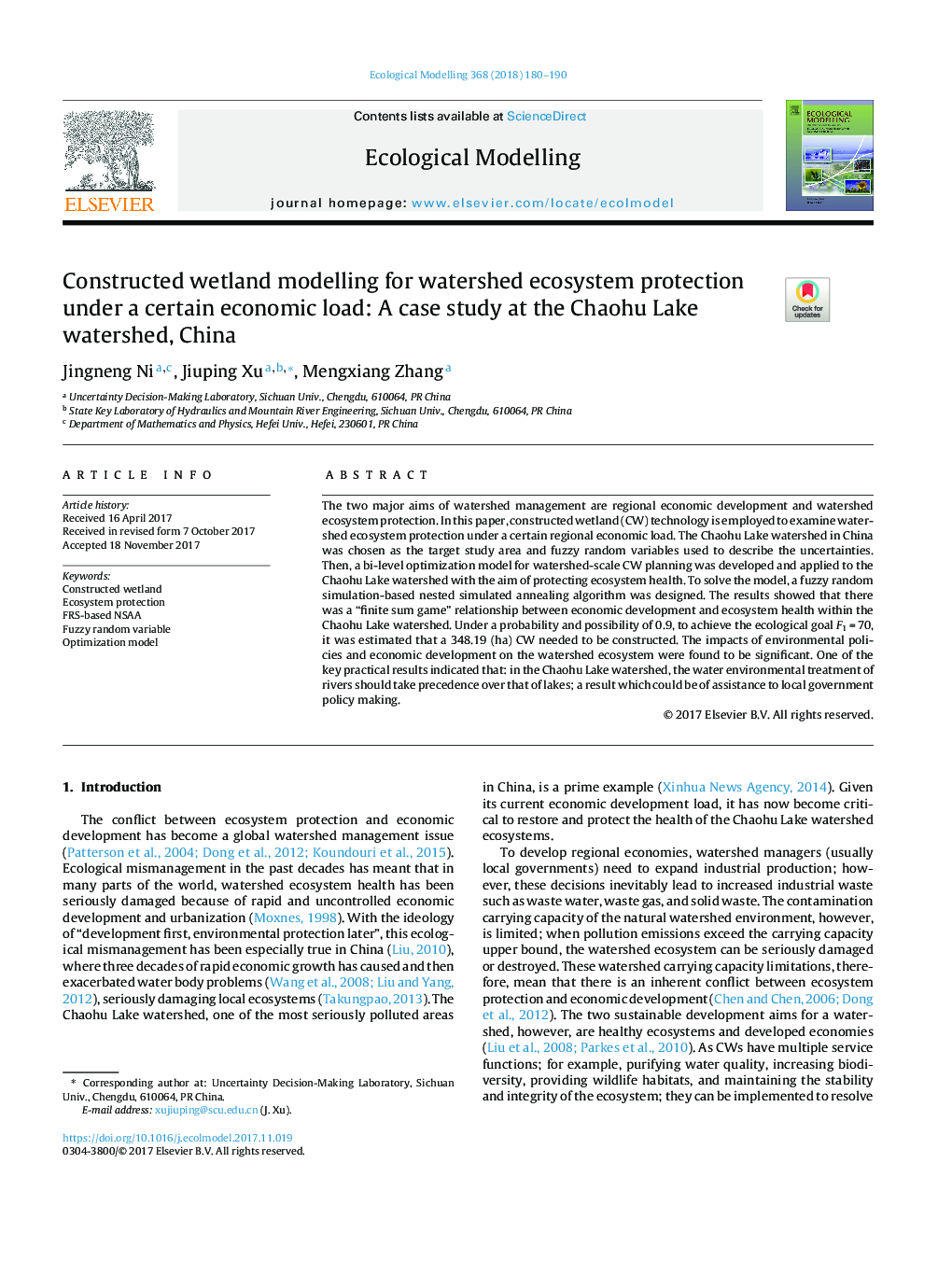| Article ID | Journal | Published Year | Pages | File Type |
|---|---|---|---|---|
| 8846141 | Ecological Modelling | 2018 | 11 Pages |
Abstract
The two major aims of watershed management are regional economic development and watershed ecosystem protection. In this paper, constructed wetland (CW) technology is employed to examine watershed ecosystem protection under a certain regional economic load. The Chaohu Lake watershed in China was chosen as the target study area and fuzzy random variables used to describe the uncertainties. Then, a bi-level optimization model for watershed-scale CW planning was developed and applied to the Chaohu Lake watershed with the aim of protecting ecosystem health. To solve the model, a fuzzy random simulation-based nested simulated annealing algorithm was designed. The results showed that there was a “finite sum game” relationship between economic development and ecosystem health within the Chaohu Lake watershed. Under a probability and possibility of 0.9, to achieve the ecological goal F1Â =Â 70, it was estimated that a 348.19 (ha) CW needed to be constructed. The impacts of environmental policies and economic development on the watershed ecosystem were found to be significant. One of the key practical results indicated that: in the Chaohu Lake watershed, the water environmental treatment of rivers should take precedence over that of lakes; a result which could be of assistance to local government policy making.
Related Topics
Life Sciences
Agricultural and Biological Sciences
Ecology, Evolution, Behavior and Systematics
Authors
Jingneng Ni, Jiuping Xu, Mengxiang Zhang,
